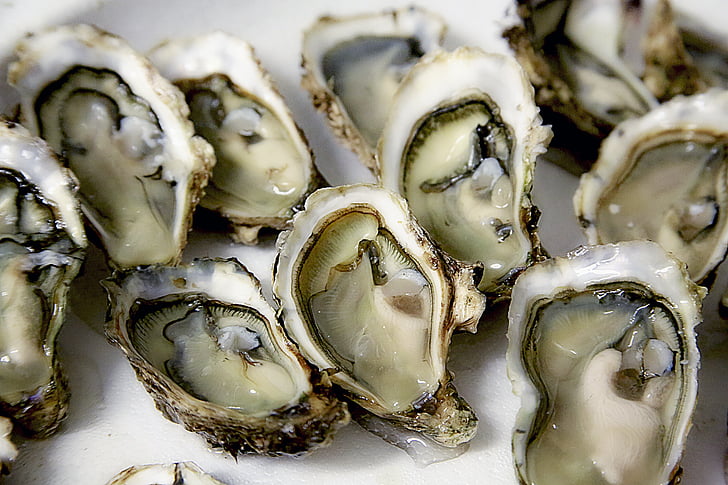Warming waters entice ‘flesh-eating bacteria’ further north
The risks are low but rising, so cook your shellfish and cover your cuts before swimming
Olivia Gieger • March 8, 2024

A Connecticut resident became sick after eating raw oysters infected with the bacterium Vibrio vulnificus this summer. Climate change may make these events more common in the Northeast, experts say. [Image Credit: PickPik | License ]
Most of us don’t have flesh-eating bacteria on our climate-change-disaster bingo cards, but after a spate of summer infections in New York and Connecticut, some experts think we should.
In August, three people in the New York area died from infections of the rare but potentially lethal bacterium Vibrio vulnificus. The bacterium usually makes its home in warm and somewhat salty waters, such as the Gulf Coast. But as the climate warms, microbiologists and epidemiologists predict that over the next 10 to 15 years, the bacterium will increasingly be found in the Northeast, too.
This summer’s spike of infections suggests that the shift may be coming even faster than anticipated. “I don’t want to say I am shocked,” said Elizabeth Archer, a marine biologist at the University of Essex. But “it is surprising in the historical context, when you know these cases were mostly occurring in the Gulf of Mexico region,” she added. In a recent paper, Archer projected that vulnificus infections in the Northeast U.S. will leap from a baseline average of around 60 annual cases to up to 115 by 2040.
This news is especially worrisome for the elderly and people with compromised immune systems and liver problems. While very few people contract vulnificus infections, one in five who do are likely to die.
“Vulnificus is an uncommon species but it is serious,” said Mike Hughes, an epidemiologist with the U.S. Centers for Disease Control and Prevention (CDC).
A “microbial barometer of climate change”
From 1988 to 2018, infections on the East Coast have increased from 10 to 80 cases a year, according to Archer’s research. The bacteria’s range has moved nearly 30 miles north per year and will continue to do so, even if the climate warms relatively slowly. By 2040, Vibrio vulnificus is likely to be at home in the Long Island Sound.
Rising water temperature is the primary driver of vulnificus’ spread, but hurricanes and coastal floods are additional climate risks that may lead to more infections. After Hurricanes Katrina and Ian, reports of Vibrio vulnificus cases spiked as people with open wounds from storm debris waded through the salty, standing water heating up in the sun.
Even though infections are rare, vulnificus and other Vibrio diseases are significant because of their role as “the microbial barometer of climate change,” wrote Craig Baker-Austin, a microbiologist at the University of East Anglia, in a recent paper.
The vivid spread of vulnificus can actively show us where changing water temperatures are altering marine environments at the microscopic level, and where that influence comes back to affect human health.
When it enters through open wounds, the bacteria kills the surrounding flesh before it creeps into the bloodstream and causes sepsis. People grow sick quickly and can die within one to two days from the “flesh-eating bacteria,” as it is known.
Preventing Infection
Around the Long Island Sound last summer, three people died of vulnificus infections, and a fourth contracted and recovered from the illness. Three of the cases were likely caused by contact with open wounds, while the fourth was caused by eating contaminated raw or undercooked oysters. All of the individuals were between 60 and 80 years old.
In response to the growing risk, the CDC issued a health advisory in September 2023 that, among other things, urged swimmers to stay out of water where vibrio is present and called on clinicians to act quickly if they suspect a vulnificus infection. Other important steps, experts say, include increasing water monitoring, especially in places where the bacterium has not been detected in the past, and broadening public education campaigns focused on getting swimmers to cover any open wounds, new piercings or fresh tattoos before entering the water.
Other key CDC recommendations: cook oysters and other shellfish before eating, wash your hands with soap and water after handling raw shellfish and seek medical attention immediately for infected wounds.
The overall risk is still low enough that even experts who study vulnificus aren’t giving up their favorite swimming holes — but they are being more cautious. When R. Sean Norman, a microbial ecologist at the University of South Carolina, goes fishing and wading with his kids in tidal creeks, they wear booties and Band-Aids. “Anytime we go down to go fishing or anything, we’re checking for scratches and cuts,” he said. “Even after we have been in contact with estuarine type water, you just wash it off.”
2 Comments
It is irresponsible to post a picture of oysters which are responsible for 10-15% of Vibrio vulnificus cases – a total of about 30 a year – and have never been implicated in an illness from a New England oyster! Wound infections are on the rise – yes – 65-85% of V vulnificus illnesses are from wound infections –
so feel free to tell people to avoid warm waters with open wounds! You are destroying our markets with this irresponsible clickbait journalism.
If you want to have a serious conversation please get your facts straight by checking the fact sheets on my website and contact me.
Hello why isn’t the fishing industry like charter boats, bait shops, and fishing enthusiast being warned about the dangers of this bacteria when they are the ones mostly catching and eating bottom dwelling fish and invertebrates, and other forms of sea creatures that can be harmed by this bacteria.